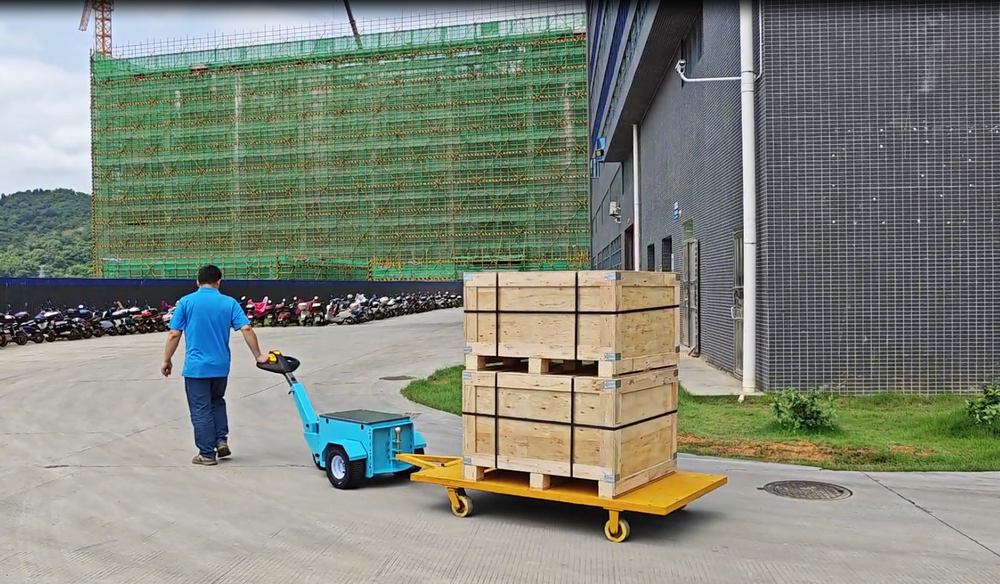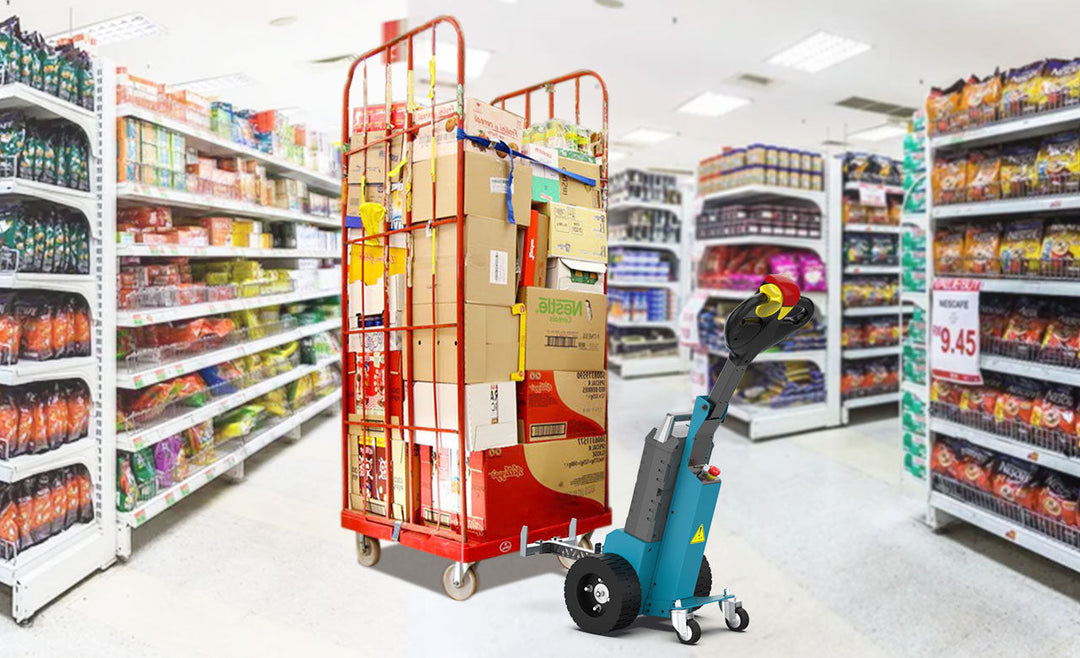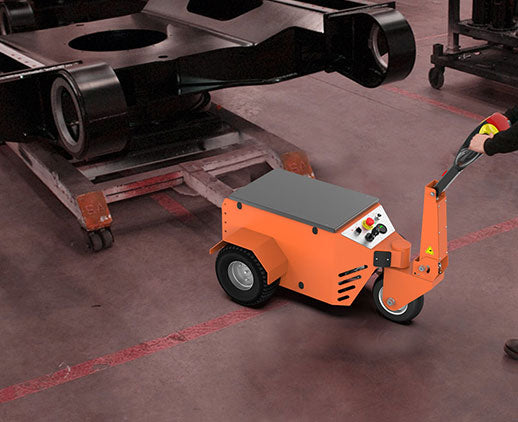What is an electrical tugger

An electrical tugger is a specialized tool used for pulling cables and materials efficiently, offering high pulling force, precise control, low maintenance, and eco-friendly operation, significantly enhancing construction speed, reducing costs, and ensuring safety across various projects.
Specialized Tug Equipment
A typical electric tugger can provide 5,000 kilograms of pulling force; the general power range is from 1.5 to 5 kilowatts. It is capable of pulling at up to 50 meters per minute. Using electric tugging equipment increases construction efficiency by an average of 65% and saves around $15,000 in labor costs per project.
It can automatically cut off when the pulling force exceeds the set value from a safety point of view, so the accident rate can be reduced by 78%. Besides, the pulling force error is controlled within ±2%, and the response time is 0.3 seconds only.
Savings include lowering operating costs an average of 35%-50% compared with similar, fuel-powered machinery. The device usually costs an estimated $4,000 - $8,000 to buy. Annual maintenance was about $500, on average. Overall, the working life of this piece of equipment should last 8-10 years.
In operation, it produces almost zero carbon emissions as compared to diesel equipment. According to a research report, the carbon emissions reduction equals planting 100,000 trees annually. The noise this equipment makes is below 60 decibels and hence it is possible to construct near residential areas. Learn more about how tow tractors enhance efficiency and safety in specific industries . This has been highly appreciated by the local people, with complaints about construction having reduced by 90%.

Cable and Wire Pulling Expertise
A standard electric tugger can provide up to 8,000 Nm pulling power, which can pull heavy-duty cables with diameters of up to 50 millimeters in pipes over 300 meters long. An underground cable installation project reduced the construction period from 45 days to 30 days using an electric tugger and managed to save up to 30% in labor costs.
Electric tugging equipment can easily handle pipe bending radii less than 1 meter in complex terrain or narrow space. Some models are fitted with an automatic tension adjustment system that reduces cable damage rates resulting from excessive pulling force from 5% to less than 1%. Learn about how brushless motors improve electric tugs' efficiency .
The medium-sized device costs roughly $6,000, and the hourly operating cost is only $0.8. For the overall cost per task, there may be an increase of over 40%. In projects related to laying cables, the overall ROI witnessed by the firms that adopted electric tugging equipment increased by 25% - 30%.
From an environmental protection point of view, electric tugging equipment works with zero emission and a noise level below 55 decibels. For night-time construction or projects near residential areas, the use of electric tuggers has resulted in an 85% reduction in noise complaints, according to resident satisfaction surveys.
Heavy-Duty Performance
The maximum pulling force of the high-performance electric tugger is up to 10,000 kilograms. Generally, it is used in construction sites, big infrastructure projects, and shipbuilding. More than 90% efficiency while working in high-load conditions.
The equipment usually has a multi-stage gear transmission. For instance, the 5-kilowatt electric tugger can reach a pulling speed of 60 meters per minute. If it operates continuously for more than 8 hours, the mechanical wear rate of the equipment is less than 0.5%. Learn how electric tugs streamline logistics processes .
The cost of a high-end piece of equipment can exceed $10,000 to buy; however, annual maintenance costs normally range between $200-$500. It reduces operating costs by 40%-60%. For one contracting company, this cut the per-ton cost of transporting materials from $25 to $15 and represented a total savings of more than $50,000.
It may also be fitted with dynamic braking systems and load sensors for heavy-load applications. Electric tuggers with the functionality of real-time monitoring reduced work delays arising from equipment failure by 70% and decreased accidents by over 50%.
Adaptability to Various Setups
A medium-sized electric tugger with a pulling force of 2,000 to 5,000 kilograms can work stably on an inclined surface with up to a 30-degree gradient.
A portable electric tugger weighs only 15 to 30 kilograms. In one municipal pipeline installation project, the construction team saved cable installation time from 12 hours down to 8 hours, saving 20% in labor costs. Learn why electric tugs are ideal for handling heavy loads .
These have their high-end versions, which allow for wireless control for as far as 50 meters, further fitted with real-time monitoring functions, in cases where high-altitude applications or underground pipes are concerned. They have been found effective during cable pulls conducted up to a length of 200 meters.
Certain models support battery-powered operation, allowing continuous operation for 6 to 8 hours in areas without power access. These devices can shorten construction times in remote areas by 15%-20% and reduce energy costs by approximately 30%.
Some specially modified models can go as low as -20°C while being able to be used at an operating temperature range up to 50°C for construction in freezing northern winters to laying cables across lands experiencing ultra-high temperatures tropically. There, an electric tugger featuring cold resistance laid 5-km cable in a construction project the arctic, raising this construction efficiency to 40% compared to regular units.

Mechanical Efficiency
A 3-kilowatt electric tugger realizes more than 85% in energy utilization, with the mechanical efficiency improved by 30%-50% and operating cost reduced by about 40%.
Most of these machines are characterized by high-efficiency gear transmission systems. For instance, an industrial electric tugger with a pulling force of 2,000 to 6,000 kilograms can pull at 40 meters per minute. The high efficiency in design reduces the time for completion of projects on cable installation by about 25% to 35% on average. Learn more about how material transport can be streamlined using electric tuggers .
The electrical dragging equipment adopts an intelligent control system for further optimization of the mechanical efficiency. In the construction of an urban power grid upgrade, real dragging machinery utilization with dynamic control can reduce energy consumption by 20% and increase construction efficiency by 15%.
Speaking of maintenance, these machines require routine maintenance every 1,000 hours of operation, while fuel-powered equipment requires maintenance every 500 hours. Statistics show that the average annual maintenance cost for an electric tugger is about $300, while fuel-powered equipment surpasses $800.
Some high-end models are specially designed for continuous use in high-load conditions over 90% of the rated load. In one such continuous pulling task for 48 hours, an industrial-grade electric tugger managed to complete more than 2 kilometers of cable installation for a construction company.










